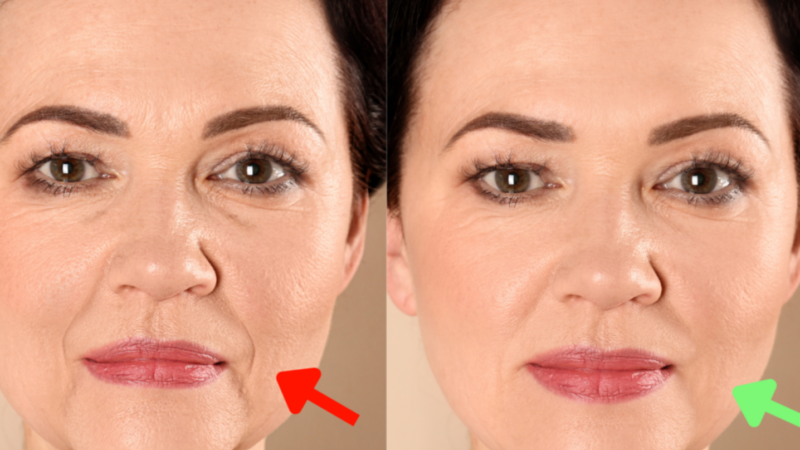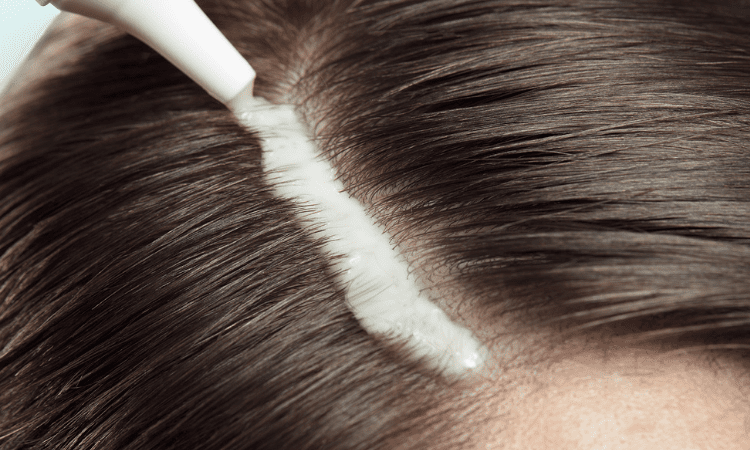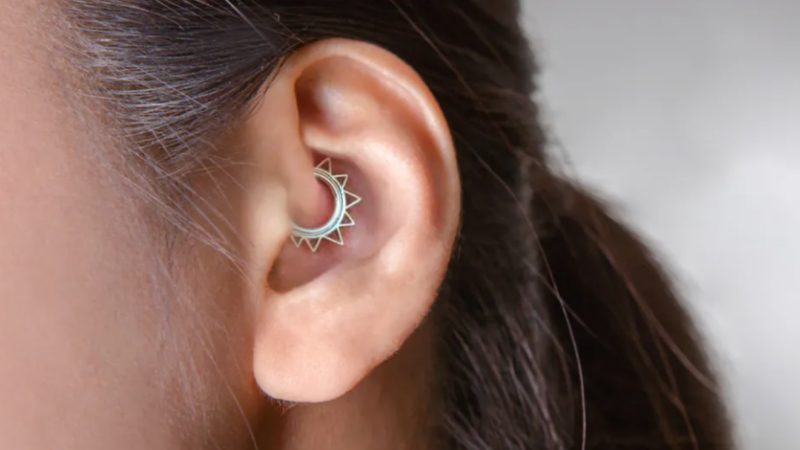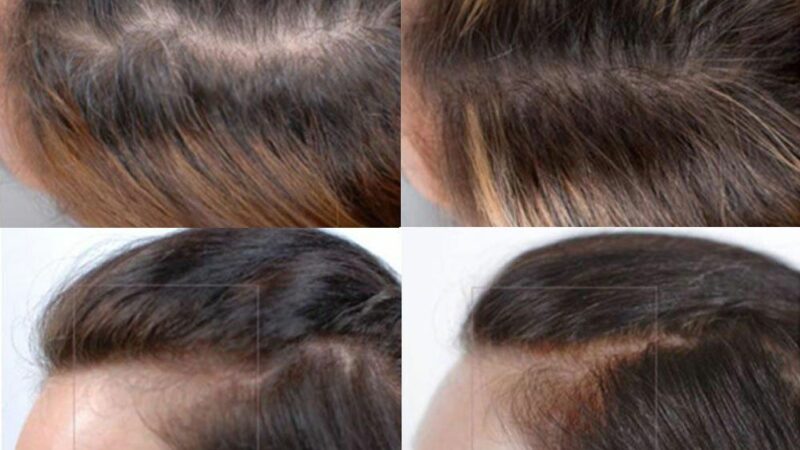The Art of Dermaplaning: A Guide to Smooth, Radiant Skin
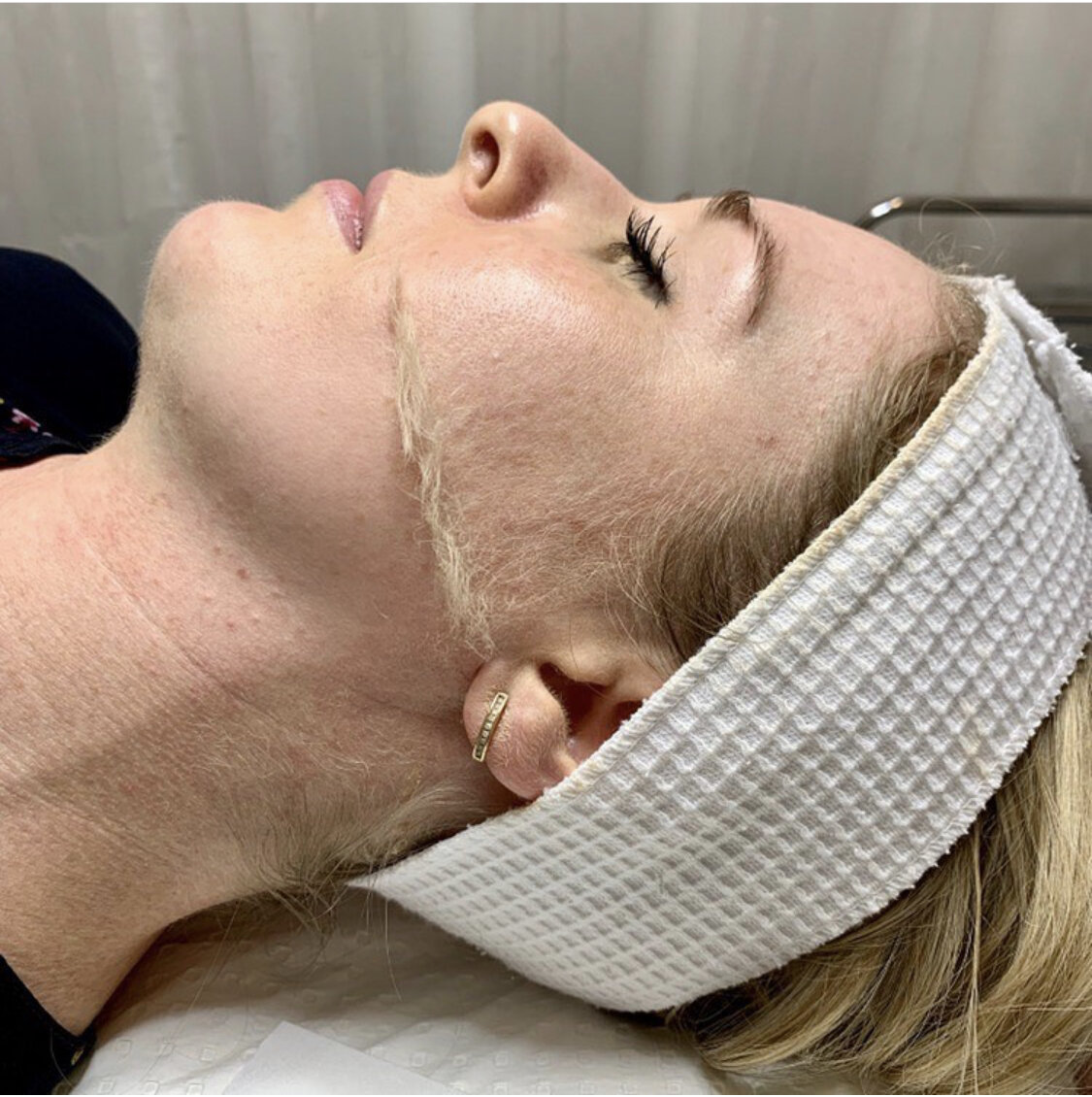
Dermaplane – In the skincare world, there is a constant quest for the next big thing to achieve that flawless, radiant complexion. One such skincare treatment that has gained popularity in recent years is dermaplane.
This non-invasive exfoliation technique has become a go-to for those seeking smoother, more youthful-looking skin. In this blog, we’ll dive deep into dermaplaning, exploring what it is, how it works, its benefits, and how to incorporate it into your skincare routine.
What Is Dermaplaning?
Dermaplaning, also known as dermablading or blading, is a skincare procedure that involves the use of a surgical scalpel to gently exfoliate the top layer of the skin, removing dead skin cells and vellus (peach fuzz) hair. This process leaves the skin feeling incredibly smooth and looking more radiant. Although it may sound intimidating, dermaplaning is a safe and relatively painless procedure by a trained professional.
How Does Dermaplaning Work?
The dermaplane process is quite straightforward:
- Cleansing: The first step is thoroughly cleaning the skin to remove any makeup, dirt, and oils.
- Preparation: The skincare professional will prepare your skin and make sure it’s dry.
- Blade Technique: Using a sterile surgical scalpel at a 45-degree angle, the professional will carefully scrape the surface of your skin. The blade is applied with gentle strokes in an upward motion.
- Post-Treatment Care: After the procedure, a soothing and hydrating serum or moisturizer is applied to the skin to prevent dryness or irritation.
Dermaplaning Benefits
- Exfoliation: Dermaplaning provides deep exfoliation, removing the top layer of dead skin cells. This improves skin texture and allows skincare products to penetrate more effectively.
- Smoother Skin: Removing peach fuzz and dead skin leaves your skin incredibly smooth, creating a flawless canvas for makeup application.
- Brighter Complexion: By eliminating the dull and lifeless layer of skin, dermaplaning reveals a brighter, more youthful complexion.
- Reduced Fine Lines and Wrinkles: Over time, dermaplane can help reduce the appearance of fine lines and wrinkles.
- Improved Product Absorption: With the barrier of dead skin removed, your skincare products are more likely to be adequately absorbed, maximizing their effectiveness.
- Safe for Most Skin Types: Dermaplaning is generally safe for all skin types, including sensitive skin, as it doesn’t involve harsh chemicals or abrasive materials.
How Often Should You Get Dermaplaning?
The frequency of dermaplaning treatments can vary depending on your skin needs and goals. Many people opt for dermaplaning every 4-6 weeks as part of their regular skincare routine. However, it’s essential to consult with a licensed skincare professional to determine the best schedule for your specific skin type and concerns.
At-Home Dermaplaning vs. Professional Treatment
While there are at-home dermaplaning tools available, it’s crucial to understand the differences between at-home and professional treatments:
- Safety: Professional dermaplane is performed by trained experts, ensuring a safer and more effective experience.
- Precision: Licensed professionals have the expertise to perform the procedure accurately, reducing the risk of nicks or cuts.
- Sterility: Professional tools and settings maintain a sterile environment, minimizing the risk of infection.
- Customization: A skincare professional can tailor the treatment to your needs, addressing concerns such as acne scars or uneven skin texture.
Risk and Side Effects of Dermaplanning
Dermaplaning is generally considered a safe and low-risk skincare procedure when performed by a trained and qualified professional. However, like any cosmetic treatment, awareness of potential risks and side effects is essential. Here are some of the possible risks and side effects associated with dermaplaning:
- Irritation and Redness: After dermaplaning, some individuals may experience mild irritation or redness, particularly if they have sensitive skin. This usually subsides within a day or two. Using soothing skincare products recommended by your skincare professional can help alleviate this.
- Minor Scrapes or Nicks: While trained professionals take precautions to minimize the risk, there is a small chance of minor cuts or nicks during the dermaplaning process. These usually heal quickly and are not typically severe. Proper sterilization and technique are crucial to reduce this risk.
- Breakouts: In some cases, dermaplane can lead to post-procedure breakouts, especially if the skin is not adequately cleaned before the treatment. It is essential to follow post-treatment care instructions provided by your skincare professional to prevent this.
- Hyperpigmentation: Individuals with a history of hyperpigmentation or melasma should approach dermaplaning cautiously. If not performed correctly or if sun protection measures are not taken post-treatment, dermaplaning can potentially exacerbate pigmentation issues.
- Infection: While the risk of infection is minimal when performed by a licensed professional using sterile instruments, there is still a small chance. It’s essential to ensure that the tools used are properly sanitized, and the treatment is carried out in a clean and sterile environment.
- Uneven Results: If dermaplane is not performed evenly or by an inexperienced practitioner, it can lead to uneven skin texture or results. This can usually be addressed with subsequent treatments or by consulting with a skincare professional.
- Allergic Reactions: In rare cases, individuals may be allergic to skincare products used before or after dermaplaning. It’s crucial to discuss any known allergies with your skincare professional and perform a patch test when trying new products.
- Sun Sensitivity: Dermaplaning removes the top layer of dead skin, which can make your skin more susceptible to UV damage. Sun protection, including sunscreen with adequate SPF and protective clothing, is vital after the procedure to prevent sunburn and further skin damage.
To minimize the risks and side effects associated with dermaplane, consider the following precautions:
- Choose a licensed and experienced skincare professional to perform the procedure.
- Share your medical history, allergies, and skin concerns with your practitioner before the treatment.
- Follow pre and post-treatment instructions provided by your skincare professional.
- Use gentle skincare products and avoid harsh exfoliants immediately after dermaplane.
- Protect your skin from sun exposure by wearing sunscreen daily.
Ultimately, most individuals who undergo dermaplane experience little to no adverse effects and are pleased with the immediate improvement in skin texture and radiance. However, having realistic expectations and prioritising safety when considering any skincare treatment is essential. Consulting with a qualified skincare professional can help you determine whether dermaplaning is suitable for your skin type and concerns.
How much does a Dermaplane procedure cost?
The cost of a dermaplaning procedure can vary widely depending on several factors, including your location, the specific skincare provider or spa you choose, and any additional treatments or services included in the package. On average, you can expect to pay anywhere from $75 to $200 per session for dermaplane.
Here are some factors that can influence the cost of a dermaplaning procedure:
- Location: The cost of dermaplaning can significantly vary by region and city. Procedures in major metropolitan areas may be more expensive than in smaller towns or rural areas.
- Provider’s Expertise: Experienced and highly reputable skincare professionals or medical spas may charge higher fees for their services.
- Additional Treatments: Some skincare providers offer dermaplane as part of a package that includes other treatments such as facials, chemical peels, or microdermabrasion. These packages may have a higher price tag but can offer better value if you’re interested in multiple skincare treatments.
- Number of Sessions: Some skincare professionals offer discounts for multiple sessions purchased in advance. This can be a cost-effective way to undergo dermaplaning regularly as part of your skincare routine.
- Geographical Location: Prices can also vary based on local competition and the overall cost of living in a particular area.
It’s important to note that while price is a consideration, the quality and safety of the procedure should be your top priority. When seeking dermaplaning or any cosmetic treatment, be sure to choose a licensed and experienced skincare professional or medical spa with a good reputation for safety and results.
Additionally, during your consultation, discuss the specific details of the dermaplaning procedure with the provider, including what is included in the price, any potential package deals or discounts, and whether there are any additional costs for aftercare products or follow-up appointments.
To get an accurate idea of the cost in your area, you should contact local skincare providers or medical spas for price quotes and compare their services, reviews, and credentials to make an informed decision that suits both your budget and skincare needs.
Who Shouldn’t Have Dermaplaning Done?
While dermaplaning is generally considered safe for most individuals, there are certain cases where the procedure may not be suitable or should be cautiously approached. Here are some scenarios in which individuals should consider avoiding dermaplaning or consulting a healthcare professional before proceeding:
- Active Acne or Severe Breakouts: If you have active acne lesions, bumps, or a severe breakout, dermaplaning may not be recommended. The procedure can potentially exacerbate acne by spreading bacteria to unaffected face areas.
- Skin Infections or Open Wounds: Individuals with skin infections, open wounds, or cold sores (herpes simplex) should avoid dermaplaning until the condition has healed completely. The procedure can worsen infections or lead to further complications.
- Certain Skin Conditions: If you have certain skin conditions, such as rosacea or eczema, dermaplaning may irritate the skin and trigger flare-ups. Discussing your condition with a skincare professional before undergoing the treatment is crucial.
- Sunburned Skin: Sunburned skin is already sensitive and damaged. Dermaplaning can further irritate sunburned skin and should be avoided until the skin has healed.
- Recent Chemical Peels or Exfoliation: If you have had a chemical peel, microdermabrasion, or other aggressive exfoliation treatments recently, you should wait until your skin has fully recovered before considering dermaplane. Combining multiple exfoliating treatments in a short period can lead to overexfoliation and skin damage.
- Blood Disorders or Medications: Individuals with bleeding disorders or taking blood-thinning medications should consult with their healthcare provider before undergoing dermaplaning, as the procedure involves minor scraping of the skin’s surface, which can cause bleeding.
- Pregnancy: While dermaplaning is generally safe during pregnancy, some pregnant individuals may experience heightened skin sensitivity and should discuss the treatment with their healthcare provider before proceeding.
- History of Keloids or Hypertrophic Scarring: If you have a history of keloid or hypertrophic scarring (excessive scar tissue formation), dermaplaning may not be suitable, as it could potentially worsen scarring.
- Recent Botox or Fillers: It’s advisable to wait a few weeks after receiving Botox or dermal filler injections before undergoing dermaplane. This allows the injectables to settle properly.
- Allergies or Sensitivities: If you have allergies to any of the products or skincare ingredients used in dermaplaning, it’s essential to inform your skin care professional to avoid allergic reactions.
Before undergoing dermaplaning or any skincare procedure, it’s crucial to have a consultation with a licensed skincare professional. During this consultation, you can discuss your specific skin concerns, medical history, and any contraindications or potential risks related to the procedure. They can provide personalized advice on whether dermaplaning is suitable for you or recommend alternative treatments that better align with your skin’s needs and conditions. Always prioritize safety and informed decision-making when it comes to skincare procedures.
Conclusion
Dermaplaning has rapidly gained popularity in skincare for its ability to deliver smoother, more radiant skin. Whether you choose to have it done by a professional or explore at-home options, it’s essential to prioritize safety and consult with skincare experts for personalized guidance. With proper care and consistent treatment, dermaplane can be an effective addition to your skincare routine, helping you achieve a brighter, more youthful complexion.
Read More – Which Types Of Bangs Will Suit Your Face Shape?
FAQs:
1. What is dermaplaning, and how does it work?
Dermaplaning is a skincare procedure that involves using a sterile surgical scalpel to gently exfoliate the top layer of the skin, removing dead skin cells and vellus (peach fuzz) hair. This process leaves the skin smoother and more radiant. It’s performed by a trained skincare professional who uses careful strokes to scrape the skin’s surface.
2. Is dermaplaning painful?
Dermaplaning is generally not painful. Most individuals describe it as a comfortable and even relaxing experience. However, during the procedure, you may feel a mild tingling sensation or a light scraping feeling. If you have concerns about discomfort, you can discuss them with your skincare professional, who can make the experience as comfortable as possible.
3. Who is a good candidate for dermaplaning?
Dermaplaning is suitable for many skin types, including sensitive skin, but it may not be suitable for individuals with active acne, skin infections, or certain skin conditions. Pregnant individuals and those with bleeding disorders should consult their healthcare provider before treatment. A consultation with a skincare professional can help determine if dermaplaning is right for you.
4. How long does a dermaplaning session take, and how often should I get it done?
A typical dermaplaning session takes about 30-45 minutes. The recommended frequency varies depending on your skincare goals and the advice of your skincare professional. Many people choose to have dermaplaning done every 4-6 weeks as part of their regular skincare routine, but this can be adjusted based on your needs.
5. Are there any side effects or downtime after dermaplaning?
Dermaplaning typically has minimal side effects. You may experience some temporary redness or mild irritation immediately after the procedure, but this usually subsides within a day or two. It’s essential to follow the post-treatment instructions provided by your skincare professional, including using gentle skincare products and applying sunscreen to protect your skin from the sun. There is generally no downtime associated with dermaplaning, and you can resume your regular activities right away.
Read More – How To Get Rid Of Blackheads On Nose?

